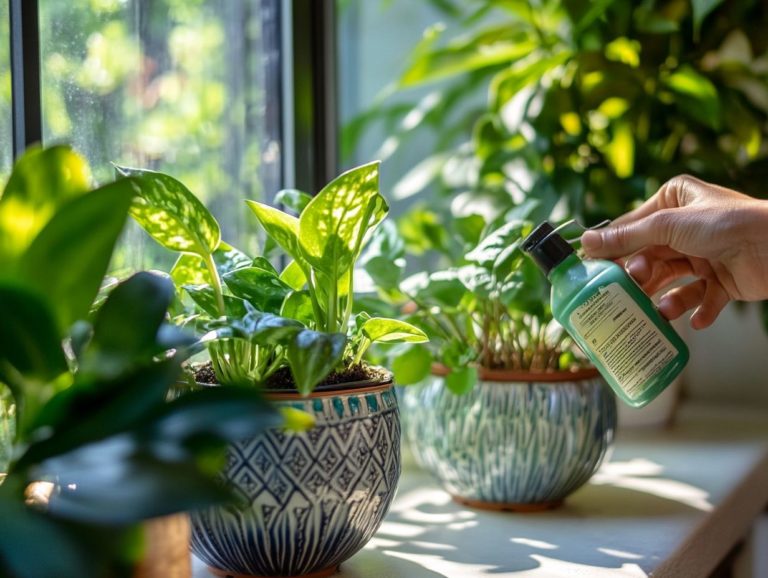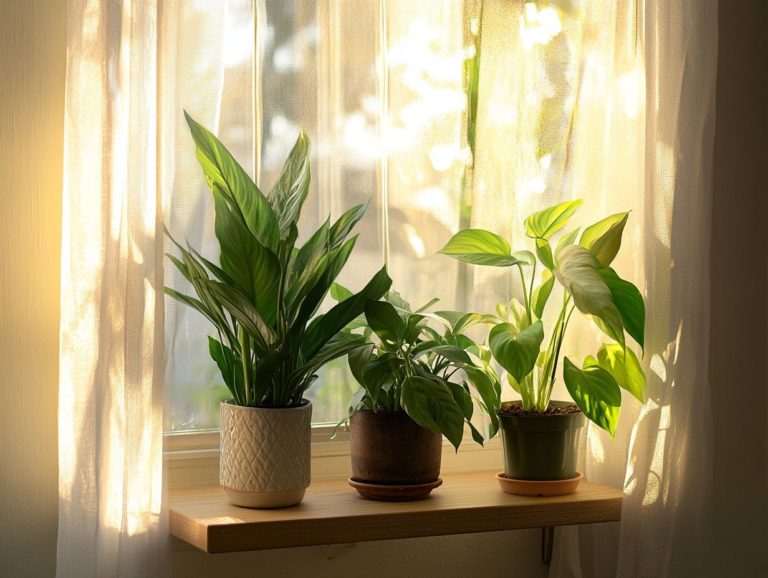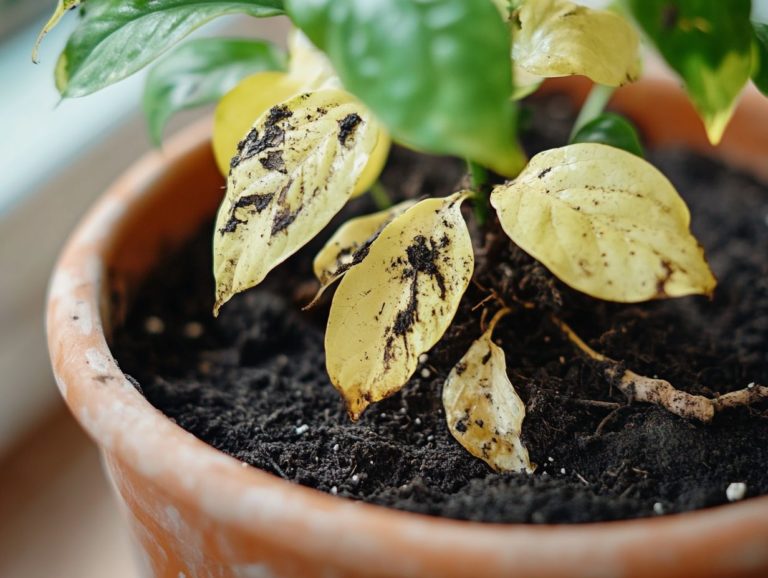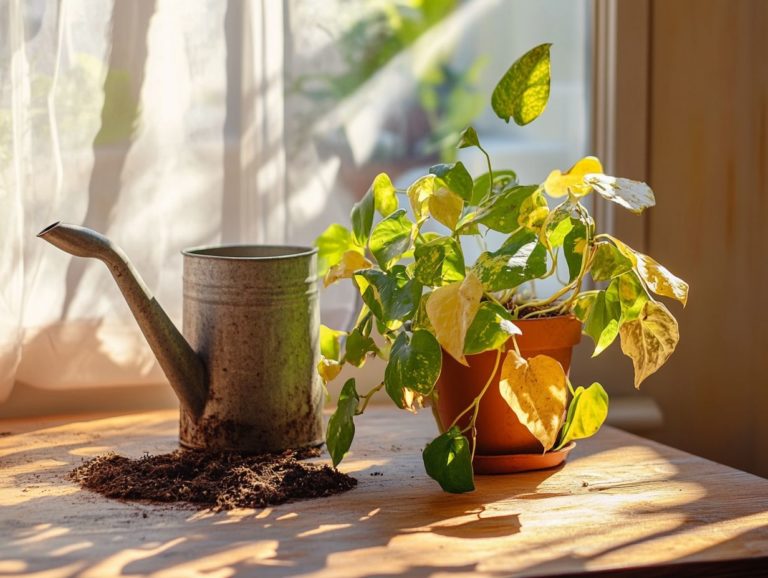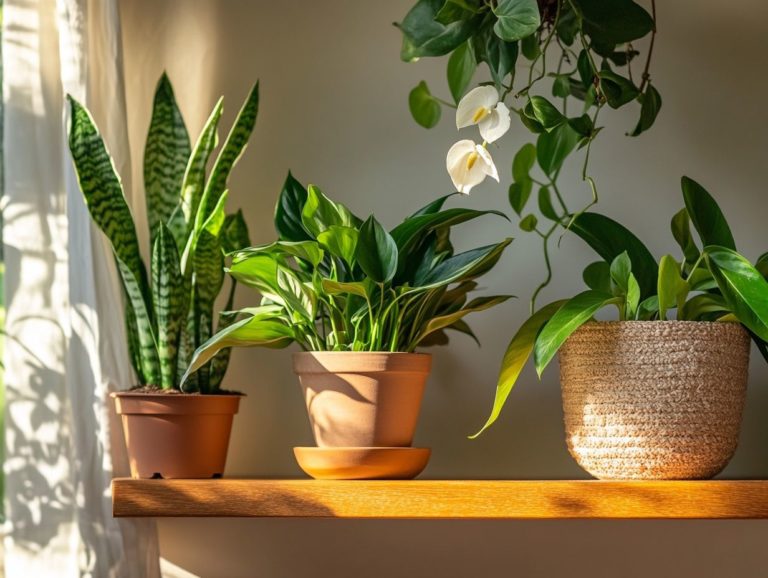How to Maintain Indoor Plants in Winter?
Winter poses unique challenges for indoor plants. It’s crucial to keep them healthy and vibrant during these cold months.
This article explores the benefits of indoor plants for your home and well-being. It also offers practical tips for transitioning your plants from summer to winter.
Contents
Key Takeaways:
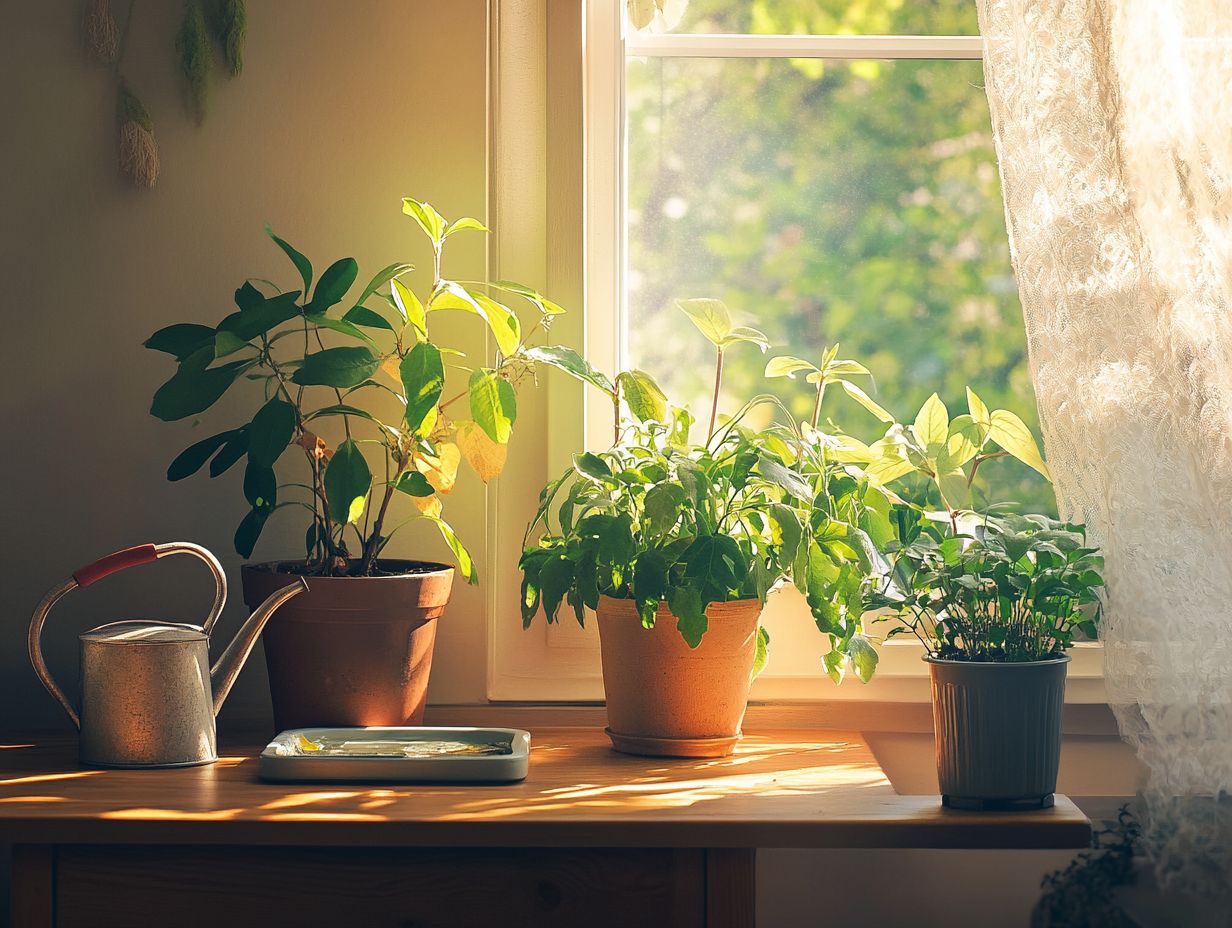
- Proper care ensures indoor plants survive winter and thrive.
- Choosing the right plants and adjusting care is key during cold months.
- Be aware of winter pests and diseases to keep your plants healthy.
The Importance of Maintaining Indoor Plants in Winter
Maintaining indoor plants during winter is essential for their overall health. Cold months present unique challenges, such as reduced sunlight and fluctuating humidity.
Giving your houseplants the right care prevents issues like leaf drop and root rot. This not only benefits the plants but also enhances your space with a calming presence of greenery.
Benefits for Both Plants and Humans
Taking care of indoor plants in winter offers more than just survival. These green friends improve plant health and provide cleaner air while reducing stress.
They purify the air by absorbing harmful pollutants and releasing oxygen. Plus, they create a calm atmosphere that lifts your mood.
Nurturing your plants fosters a sense of accomplishment and responsibility, easing any feelings of anxiety. Integrating houseplants into your routine can turn your home into a healthier sanctuary.
Preparing Indoor Plants for Winter
Preparing your indoor plants for winter requires thoughtful adjustments. This ensures they flourish despite colder weather and low humidity.
By understanding the needs of various plants, you can mitigate issues like leaf drop and pest infestations.
Transitioning from Summer to Winter
Transitioning your plants from summer to winter involves making careful adjustments. Changes in humidity and temperature can significantly affect their health.
To ensure a smooth transition, gradually modify your watering routine. Cooler temperatures often lead to slower growth and reduced water needs.
Monitor humidity levels closely. Indoor heating can create a dry atmosphere, stressing your plants. Consider using a humidifier or clustering them together to retain moisture.
Keep an eye on temperature changes as well. Ensure tropical varieties aren’t exposed to cold drafts or extreme heat, which can cause leaf drop.
Your attentive care during this seasonal shift will help your plants thrive throughout winter.
Pick the Perfect Winter Plants!

Choosing the right indoor plants for winter is crucial for your success. Certain houseplants and tropical varieties thrive under the reduced sunlight and lower humidity levels that define this season.
Understanding the specific needs of these plants can significantly enhance their survival and growth during the colder months.
For example, many tropical varieties prefer bright, indirect light. Positioning them near a window without subjecting them directly to harsh rays creates the perfect environment.
Maintaining humidity is also crucial. Consider using a humidifier or placing a pebble tray filled with water nearby to mimic the damp conditions they thrive in.
As winter approaches, selecting resilient options like snake plants and peace lilies will serve you well. These plants adapt well to changing conditions.
Proper Watering Techniques for Winter
Establishing a proper watering routine during winter is essential for maintaining the health of your plants. Indoor environments often present unique challenges, as lower humidity levels and cooler temperatures mean your plants will require different moisture levels compared to other seasons.
Adjusting Watering Frequency
Adjusting the watering frequency for your indoor plants during winter is crucial. The reduced humidity levels and cooler temperatures can significantly impact how quickly they absorb moisture.
If you overlook these changes, you risk overwatering or underwatering. Both can compromise the health of your plants.
Seasonal shifts affect not just the climate but also the specific needs of different plant varieties. For instance, succulents and cacti thrive on less frequent watering than their tropical counterparts.
A tool that measures how wet or dry the soil is can serve as a reliable guide for gauging soil dampness. This device allows for precise assessments, guiding your watering decisions and fostering strong, vibrant growth.
Consistently improper watering can lead to root rot or dehydration, underscoring the importance of attentive care.
Dealing with Dry Air and Humidity
Dry air during winter can be tough for indoor plants. Most houseplants thrive within specific humidity levels, and neglecting this can lead to pest infestations.
To tackle this issue, incorporate solutions like a humidifier. It can effectively boost indoor humidity levels, creating a more favorable environment for your plants.
Group your plants together to create a humid environment. This helps meet their moisture needs.
This not only maintains the necessary humidity but also helps deter pests like spider mites and aphids, which often flourish in dry conditions.
By prioritizing proper humidity management, you can enhance the overall health of your plants. This promotes lush foliage and vibrant blooms.
Providing Adequate Light and Temperature
Providing adequate light and temperature for your indoor plants during winter is essential. With reduced sunlight exposure, your plants may experience stress and their health could suffer.
This situation calls for thoughtful seasonal adjustments to ensure they thrive in the colder months.
Start taking care of your plants today for a vibrant indoor garden this winter!
Using Artificial Light Sources
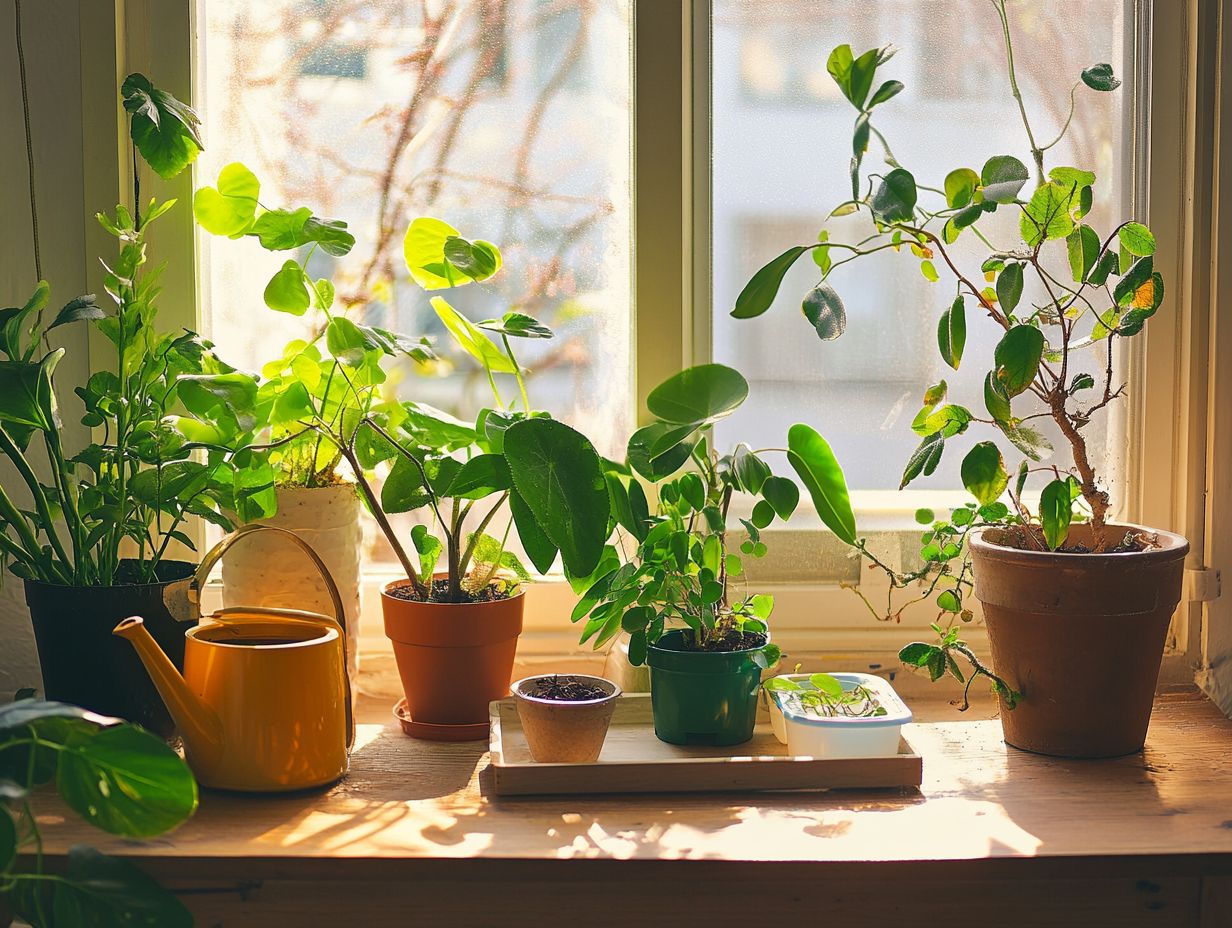
Using artificial light sources like grow lights can enhance sunlight exposure for your indoor plants during winter. This ensures they receive the essential energy needed for growth and vitality.
These specialized lights come in various types, each tailored to meet different plant needs.
- Fluorescent lights are popular due to their energy efficiency and cooler temperatures, making them ideal for seedlings and leafy greens.
- LED grow lights offer remarkable versatility and can emit specific wavelengths that boost photosynthesis, accelerating growth rates.
- Powerful lights are effective for flowering and fruiting plants due to their strong output.
To use grow lights effectively, position them at the optimal distance from your plants. Adjust the duration of illumination based on individual plant requirements, considering factors like light intensity and spectrum.
By integrating these lighting solutions thoughtfully, you can significantly enhance the health and productivity of your indoor garden.
Controlling Temperature Fluctuations
Controlling temperature fluctuations is crucial for your indoor plants’ well-being during winter. Significant temperature extremes can induce stress and hinder proper care.
Create a stable environment by eliminating cold drafts from windows or doors, which can shock delicate foliage. A reliable thermostat will help maintain a consistent climate, ensuring warmth from heating systems is evenly distributed.
Regularly monitor temperature and humidity levels, as your plants thrive best within specific ranges. Use a digital hygrometer for accurate readings, allowing you to make timely adjustments in humidity through humidifiers or pebble trays. This attention to detail provides the optimal conditions needed for vibrant plant growth.
Common Winter Plant Pests and Diseases
Winter often brings common plant pests and diseases that can jeopardize your indoor plants’ well-being. Proactive pest control and regular monitoring are essential to prevent issues like leaf drop and other complications.
It s crucial to stay ahead of potential threats to ensure your plants thrive during the colder months.
Identifying and Treating Pests
Identifying and addressing pests like spider mites is crucial for maintaining your plants’ health during winter. These pests thrive in the dry indoor air common in this season.
Recognizing early signs of infestation can make a world of difference. Symptoms include yellowing leaves, webbing between leaves, or any general decline in health. These pests can sneak in unnoticed, so a vigilant approach is essential.
There are several effective methods to combat these unwelcome guests:
- Introduce beneficial insects.
- Apply insecticidal soap.
- Utilize neem oil treatments.
- Use grow lights to enhance sunlight exposure.
Adopting preventive strategies, like maintaining optimal humidity levels and regularly inspecting your plants, can significantly reduce the chances of infestations.
Preventing and Managing Diseases
Preventing and managing diseases in your indoor plants during winter is crucial. Low humidity levels and potential pest infestations can create the perfect storm for plant health issues.
During winter, many indoor plants, especially tropical plants, become vulnerable to fungal infections, root decay from excess moisture, and pests like spider mites and aphids. To keep your greenery thriving, maintain adequate humidity levels, ideally between 40-60%. You can achieve this with humidifiers or pebble trays. Additionally, consider learning how to maintain soil moisture for indoor plants to further support their health.
Regularly check your plants to catch any issues early and keep them thriving! Inspect for signs of pests and adhere to proper watering practices. Allow the top inch of soil to dry out before watering again to significantly lower risks associated with common diseases.
Dusting the leaves regularly helps plants absorb more light and boosts overall vigor, which is vital for plant growth.
Frequently Asked Questions
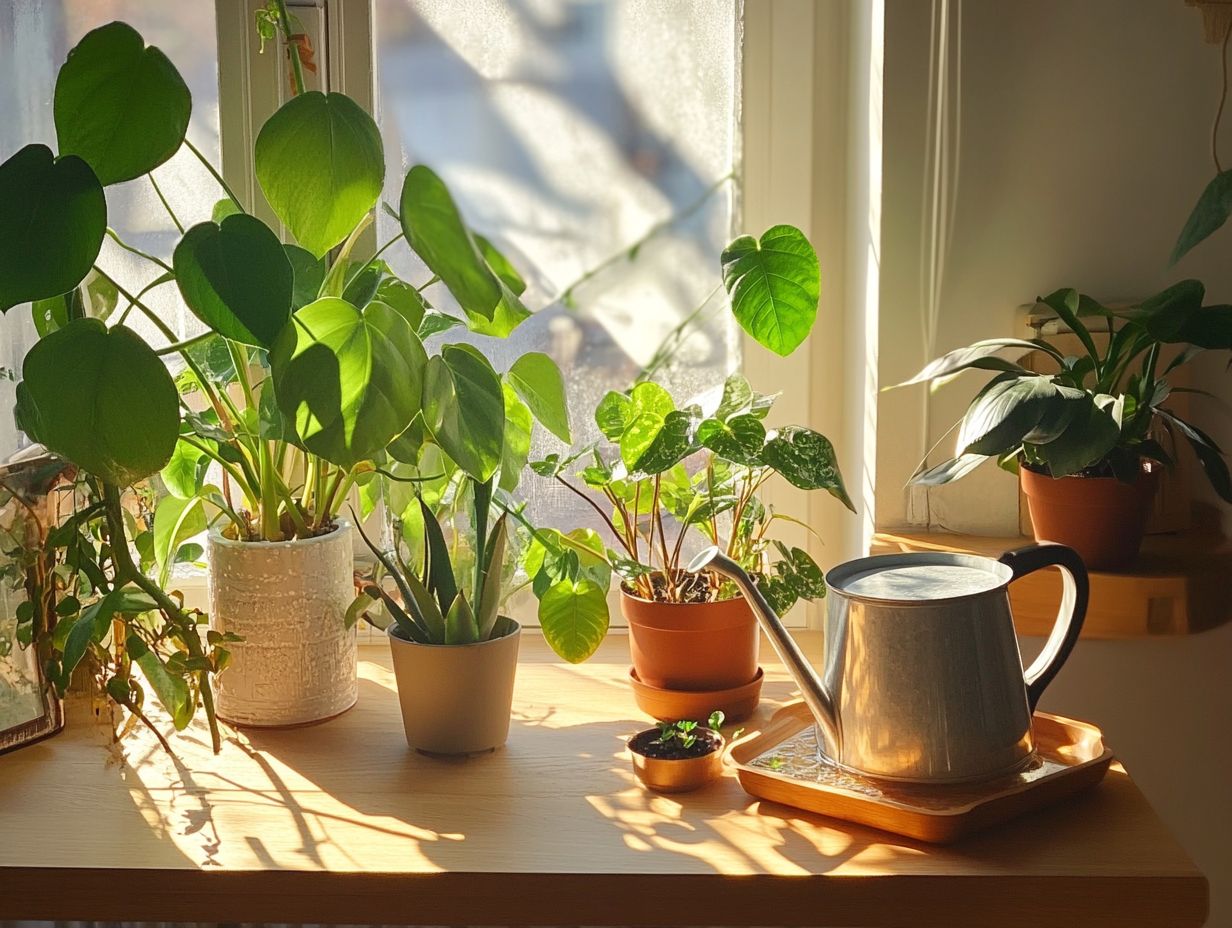
Can indoor plants survive in winter?
Yes, indoor plants can survive in winter with proper care and maintenance.
How often should I water my indoor plants in winter?
Watering frequency in winter varies by plant type and location. Generally, plants need less water, so check the soil moisture before watering and adjust accordingly.
Do indoor plants need sunlight in winter?
Yes, indoor plants still need sunlight in winter, but the amount may be less compared to other seasons. Place your plants near a window that receives enough natural light.
What temperature is ideal for indoor plants in winter?
Most indoor plants, including caladium, pothos, and peace lilies, prefer temperatures between 60-75 degrees Fahrenheit. Avoid placing them near cold drafts or heat sources, as extreme temperature changes can stress the plants.
How can I prevent my indoor plants from drying out in winter?
To prevent plants from drying out in winter, avoid overwatering and mist the leaves regularly. You can also place a tray of water near your plants to increase humidity, providing a humidity boost.
Is fertilizing necessary for indoor plants in winter?
Fertilizer pause is generally not necessary for most indoor plants during winter, as they are dormant. However, if you notice signs of nutrient deficiency, you can use a diluted, slow-release fertilizer.
Share your own tips or experiences with indoor plant care in winter!

